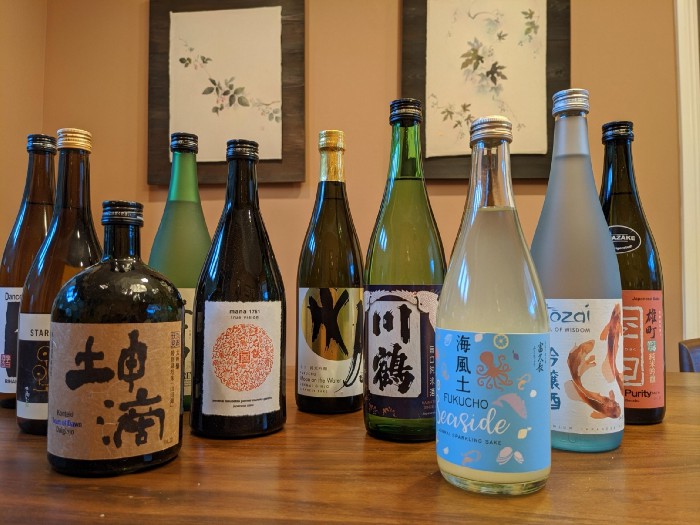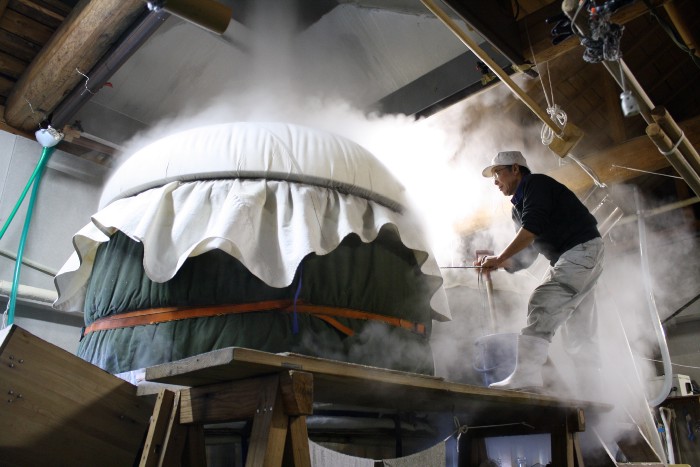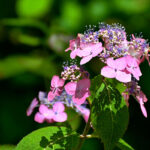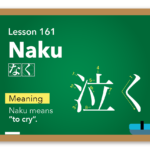A side-by-side tasting made me appreciate the lighter taste of non-junmai sake
.

.
I used to be a sake snob. Actually, I still am. But I used to be an ignorant sake snob. Now I know better.
I used to turn my nose up at any sake that wasn’t junmai. But then I had a tasting experience that taught me everything I thought I knew was wrong.
Junmai (純米) translates literally to “pure rice” and means sake with no added alcohol. Japanese sake can be categorized as junmai or non-junmai (technically called aru-ten, meaning alcohol added.)
Junmai sake has only 4 ingredients: rice, water, yeast, and koji mold.
Koji mold breaks down the carbohydrates in the rice into sugar, yeast turns the sugar into alcohol, and voila — the beautiful drink we call sake pours out of the bottle.
To these 4 simple ingredients, non-junmai sake adds a 5th – alcohol. “Neutral spirits” is the official term. It’s pure ethanol produced in an industrial process.
Why the heck would sake brewers add industrial alcohol to their already alcoholic beverage? Is alcohol added to beer? No. Wine? No. Then why add alcohol to sake?
.
Why Add Alcohol to Sake?
The obvious reason to add alcohol is to increase the alcohol content to make a stronger beverage. But that’s not the reason. In fact, at the end of fermentation, sake has an alcohol content of around 20%. Water is actually added (except for undiluted genshu sake) to reduce the alcohol content to 15-16% for ideal drinkability.
The other obvious answer is to make more money. Industrial alcohol is far cheaper to produce than sake. And here’s where the answer gets complicated, and the reason non-junmai has a bad reputation among people who don’t know better.
Adding industrial alcohol is indeed a shortcut to making sake at lower cost. Especially in the years after the war when rice was in short supply, adding a large dollop of alcohol was the only viable way to make sake.
Even now, rice is expensive, especially in Japan where the farms are small and the work labor-intensive, and the special strains of rice used for making sake even more so. Fermenting rice into alcohol is a complex process that takes time and space, adding to the cost.
Alcohol distilled from grain, corn, sugarcane, fruit juice or other materials is far cheaper.
Most non-premium sake is made in large, industrial factories, and competes on price rather than flavor. A large quantity of distilled alcohol is added to reduce production costs. Seeing alcohol on the list of ingredients is usually a reliable sign that the sake is cheap crap.
But not always. Not for the good stuff — not for premium ginjo-class sake.
You’d think “pure rice” sake would always be better than its opposite. “Alcohol added” sake doesn’t even sound good. In Japanese, the words “Junmai Daiginjo” have a wonderful rhythm that rolls off the tongue like the smoothest sake. It even sounds like “best of the best” and has a beautiful ring to the words to match its elegant taste. Junmai daiginjo sounds so much better than plain daiginjo.
So I always thought junmai sake had to be better than non-junmai. I wouldn’t buy anything else. I was about to find out I was wrong.
.
A Taste Test on Sado Island
Before the pandemic, I had the opportunity to join a tour of sake breweries in Niigata. (Highly recommended!)
One of the breweries we visited was Obata Shuzo on beautiful Sado Island. Obata makes the Manotsuru brand of sake as well as running a sake brewing school called Gakkogura.
After touring the brewery and watching the production process, we sat down for a tasting of their bottles.
The highlight was a tasting was their top-of-line flagship sakes, Maho and Miku. Mr. Obata, the owner, explained that these two sakes were named for his own two daughters.
To avoid favoring one over the other, he makes them as similar as possible, with the exception that Miku is junmai while Maho has added alcohol.
.

.
Both are deeply milled to a 35% milling ratio (精米歩合), meaning the outer 65% of the rice has been removed to leave only the kernel. These are ultra-high quality sakes, far beyond the requirement of the top class of sake — daiginjo — for a milling ratio of 50% or lower.
(It takes some getting used to, but lower numbers means less rice remaining after milling and therefore higher quality.)
The two sakes are brewed with similar processes. Maho uses Yamada-Nishiki rice while Miku is made from Koshitanrei. But the primary difference is Maho is a daiginjo while Miku is a junmai daiginjo.
We sat down to taste them, smelling the light fragrance and swishing a taste on our tongues. Like most daijingo, the taste of both was smooth and elegant with a soft finish that demanded another sip. I could drink either sake forever and die a happy man.
But if I had to pick one? I closed my eyes took another taste of each to compare. It was a tough choice, but to me, the Maho just seemed perfect.
When we took a survey of the group, the preferences were evenly matched — though all 12 people on the tour loved both of them, 6 selected Maho and 6 chose Miku as their favorite.
How was this possible? This sake snob who refused to buy non-junmai sake had just selected the non-junmai as one of his all-time favorites.
Did the different rice make a difference? Undoubtedly. I find I like the taste of sake made from Yamada Nishiki over other rice varieties. But I was sure that wasn’t all. Did I enjoy the taste of industrial alcohol? Probably not.
And I wasn’t alone. There had to be a reason why brewers added alcohol to high-quality sake that had nothing to do with cutting cost.
.

.
I later took a class on sake taught by the sake guru, John Gauntner. If you enjoy sake and want to learn the details, I can’t recommend his class more highly. The silver lining of the pandemic is John’s class is online so you can join from anywhere without having to fly to Tokyo.
John spoke on the question of junmai vs non-junmai during his class and suddenly everything made sense.
Sake fermentation stops when the alcohol reaches 20%. At that level, the alcohol kills the yeast.
In premium sake, many of the chemicals in the fermenting mash that provide the flavor are soluble in alcohol. By raising the alcohol level over 20% before pressing, the brewer can extract more of these chemicals to provide a wider, deeper flavor.
A second reason is that when the fermenting mash reaches exactly the taste profile the brewer wants, adding a small amount of alcohol to take it over 20% kills the yeast and stops the fermentation process immediately. Adding alcohol gives the brewer precise control over the flavor profile.
Lastly, adding a small amount of alcohol creates a more robust structure, providing an extended shelf life to the finished product.
Unlike in the cheap sake, the amount of alcohol added to premium sake is small, and the difference in taste can be subtle. Even a professional can’t always tell the difference. In general, junmai is fuller and richer in taste and non-junmai tends to be lighter and more aromatic.
And that is the difference for me. I prefer the lighter, more aromatic non-junmai sakes over the richer junmai. That’s the difference I tasted with Maho and Miku and the reason I chose Maho. Half the group preferred the slightly richer junmai and half the group chose the slightly more aromatic non-junmai. Either way, both were wonderful.
So now I’m an even worse sake snob, drinking daiginjo as much as possible, and looking down on all the uneducated slobs who think junmai means better sake.
..
.
『Learn Japan Deeply with DC!』
Writer: DC Palter
Read DC’s Stories More at Japonica Publication ( medium.com/japonica-publication )
(4/1/2022)
.
.




